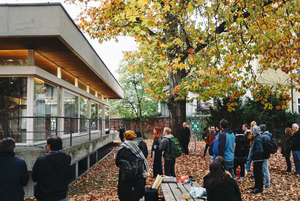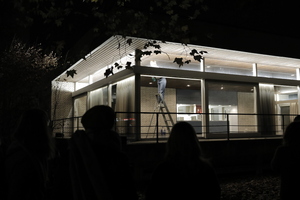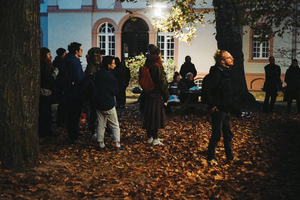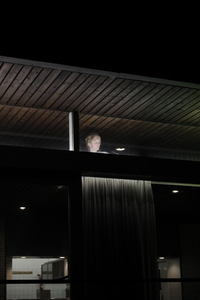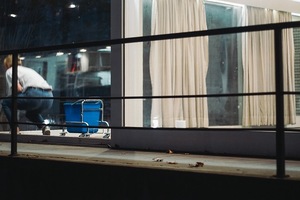"Diplomarbeit"
| Begriff | Diplomarbeit |
| Metakey | Typ der Abschlussarbeit (institution:graduation-project-type) |
| Typ | Keyword |
| Vokabular | HfG |
1270 Inhalte
- Seite 1 von 106
Prolog 1 (Pavillon)
- Titel
- Prolog 1 (Pavillon)
- Autor/in
- Titel
- Prolog 1 (Pavillon)
- Urheberrechtshinweis
- © Judith Milz; Cecile Kobel; Valentin Pfister
- Rechtsschutz/Lizenz
- Freigabe Nutzung HfG
- Medienersteller/in
- Beziehung/Funktion
- Projektleiter/in
- Semester
- Studiengang
- Typ der Abschlussarbeit
- Importiert am
- 06.05.2025
- Übergeordnete Sets
- 1
Prolog 1 (Pavillon)
- Titel
- Prolog 1 (Pavillon)
- Autor/in
- Titel
- Prolog 1 (Pavillon)
- Urheberrechtshinweis
- © Judith Milz; Cecile Kobel; Valentin Pfister
- Rechtsschutz/Lizenz
- Freigabe Nutzung HfG
- Medienersteller/in
- Beziehung/Funktion
- Projektleiter/in
- Semester
- Studiengang
- Typ der Abschlussarbeit
- Importiert am
- 06.05.2025
- Übergeordnete Sets
- 1
Prolog 1 (Pavillon)
- Titel
- Prolog 1 (Pavillon)
- Autor/in
- Titel
- Prolog 1 (Pavillon)
- Urheberrechtshinweis
- © Judith Milz; Alexander Theis
- Rechtsschutz/Lizenz
- Freigabe Nutzung HfG
- Medienersteller/in
- Beziehung/Funktion
- Projektleiter/in
- Semester
- Studiengang
- Typ der Abschlussarbeit
- Importiert am
- 06.05.2025
- Übergeordnete Sets
- 1
Prolog 1 (Pavillon)
- Titel
- Prolog 1 (Pavillon)
- Autor/in
- Titel
- Prolog 1 (Pavillon)
- Urheberrechtshinweis
- © Judith Milz; Alexander Theis
- Rechtsschutz/Lizenz
- Freigabe Nutzung HfG
- Medienersteller/in
- Beziehung/Funktion
- Projektleiter/in
- Semester
- Studiengang
- Typ der Abschlussarbeit
- Importiert am
- 06.05.2025
- Übergeordnete Sets
- 1
Prolog 1 (Pavillon)
- Titel
- Prolog 1 (Pavillon)
- Autor/in
- Titel
- Prolog 1 (Pavillon)
- Urheberrechtshinweis
- © Judith Milz; Cecile Kobel; Valentin Pfister
- Rechtsschutz/Lizenz
- Freigabe Nutzung HfG
- Medienersteller/in
- Beziehung/Funktion
- Projektleiter/in
- Semester
- Studiengang
- Typ der Abschlussarbeit
- Importiert am
- 06.05.2025
- Übergeordnete Sets
- 1
Prolog 1 (Pavillon)
- Titel
- Prolog 1 (Pavillon)
- Autor/in
- Titel
- Prolog 1 (Pavillon)
- Urheberrechtshinweis
- © Judith Milz; Cecile Kobel; Valentin Pfister
- Rechtsschutz/Lizenz
- Freigabe Nutzung HfG
- Medienersteller/in
- Beziehung/Funktion
- Projektleiter/in
- Semester
- Studiengang
- Typ der Abschlussarbeit
- Importiert am
- 06.05.2025
- Übergeordnete Sets
- 1
Prolog 1 (Pavillon)
- Titel
- Prolog 1 (Pavillon)
- Autor/in
- Titel
- Prolog 1 (Pavillon)
- Urheberrechtshinweis
- © Judith Milz; Alexander Theis
- Rechtsschutz/Lizenz
- Freigabe Nutzung HfG
- Medienersteller/in
- Beziehung/Funktion
- Projektleiter/in
- Semester
- Studiengang
- Typ der Abschlussarbeit
- Importiert am
- 06.05.2025
- Übergeordnete Sets
- 1
Prolog 1 (Pavillon)
- Titel
- Prolog 1 (Pavillon)
- Autor/in
- Titel
- Prolog 1 (Pavillon)
- Urheberrechtshinweis
- © Judith Milz; Cecile Kobel; Valentin Pfister
- Rechtsschutz/Lizenz
- Freigabe Nutzung HfG
- Medienersteller/in
- Beziehung/Funktion
- Projektleiter/in
- Semester
- Studiengang
- Typ der Abschlussarbeit
- Importiert am
- 06.05.2025
- Übergeordnete Sets
- 1
Prolog 1 (Pavillon)
- Titel
- Prolog 1 (Pavillon)
- Autor/in
- Titel
- Prolog 1 (Pavillon)
- Urheberrechtshinweis
- © Judith Milz; Alexander Theis
- Rechtsschutz/Lizenz
- Freigabe Nutzung HfG
- Medienersteller/in
- Beziehung/Funktion
- Projektleiter/in
- Semester
- Studiengang
- Typ der Abschlussarbeit
- Importiert am
- 06.05.2025
- Übergeordnete Sets
- 1
Prolog 1 (Pavillion)
- Titel
- Prolog 1 (Pavillion)
- Autor/in
- Datierung
- 23.10.2018
- Titel
- Prolog 1 (Pavillion)
- Urheberrechtshinweis
- © Judith Milz, Cecile Kobel, Valentin Pfister
- Rechtsschutz/Lizenz
- Freigabe Nutzung HfG
- Medienersteller/in
- Beziehung/Funktion
- Projektleiter/in
- Semester
- Studiengang
- Typ der Abschlussarbeit
- Importiert am
- 30.07.2024
- Übergeordnete Sets
- 1
Prolog 1 (Pavillion)
- Titel
- Prolog 1 (Pavillion)
- Autor/in
- Datierung
- 23.10.2018
- Titel
- Prolog 1 (Pavillion)
- Urheberrechtshinweis
- © Judith Milz, Cecile Kobel, Valentin Pfister
- Rechtsschutz/Lizenz
- Freigabe Nutzung HfG
- Medienersteller/in
- Beziehung/Funktion
- Projektleiter/in
- Semester
- Studiengang
- Typ der Abschlussarbeit
- Importiert am
- 30.07.2024
- Übergeordnete Sets
- 1
Prolog 1 (Pavillion)
- Titel
- Prolog 1 (Pavillion)
- Autor/in
- Datierung
- 23.10.2018
- Titel
- Prolog 1 (Pavillion)
- Urheberrechtshinweis
- © Judith Milz, Cecile Kobel, Valentin Pfister
- Rechtsschutz/Lizenz
- Freigabe Nutzung HfG
- Medienersteller/in
- Beziehung/Funktion
- Projektleiter/in
- Semester
- Studiengang
- Typ der Abschlussarbeit
- Importiert am
- 30.07.2024
- Übergeordnete Sets
- 1
